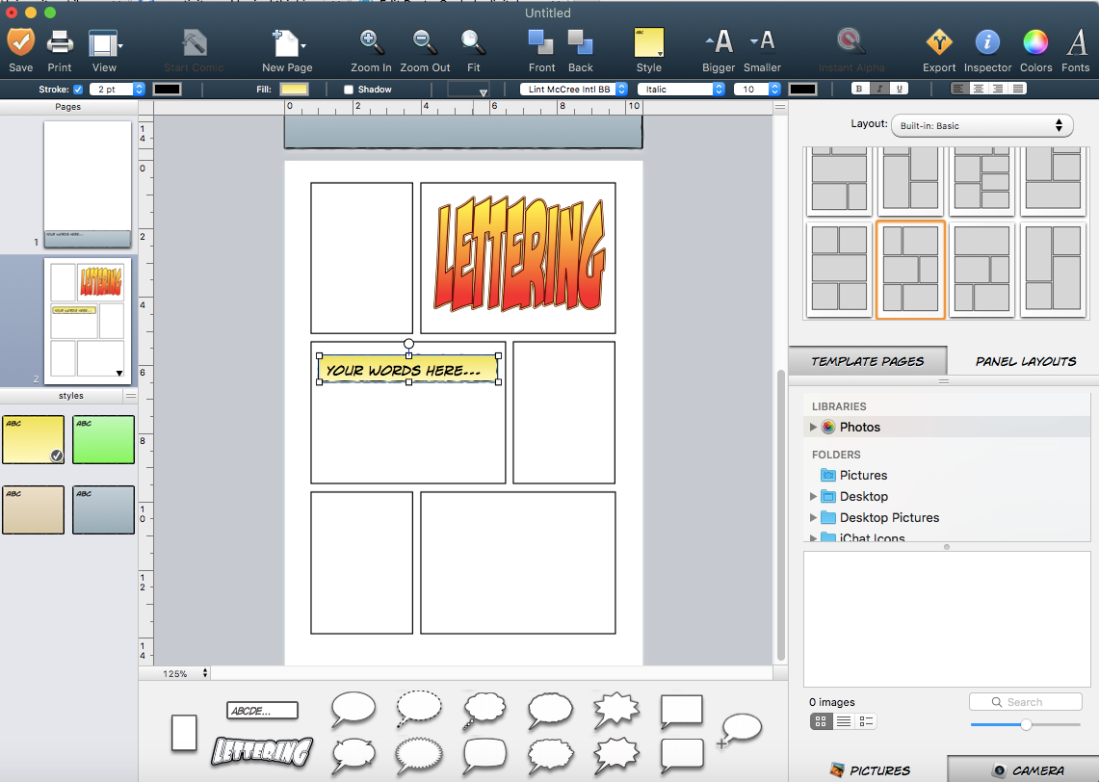Over the years the use of comics has been a powerful tool in teaching various topics across the curriculum and promoting reading literacy for all learners. Comics allow students to analyze, synthesize and absorb content in an interesting and engaging way ().
Implementing programs such as that of “Comic life” allow for students to create a multitude of objects such as comics, annotated images, storybooks, and brochures. Within the classroom, comic life can be applied to all different disciplines and allow for concepts taught in the classroom to be transformed into digital images and narratives.

Within the classroom, the use of the tool can be applied for a variety of purposes including for assessment, creating scientific reports, or short stories. Student participation and engagement is facilitated through applying comic life within the classroom as it encourages the creativity of students and provides them with a platform to explore and present their interpretations of concepts by deconstructing them and presenting them in their own clarification. In turn, provides evidence of student understanding of concepts for the teacher. For example, when teaching students about the water cycle, students can create a short story that illustrates the cycle of a small water particle in the form of a narrative (Figure 1) allowing students to synthesize and analyze information needed in order for it to be placed in the form of a narrative. Thus by adding an individual view of abstract concepts, student creativity is enhanced as they are required to interpret and develop their own views and understanding of the concept (Arroio, 2011). Additionally, comic life can assist students to create reports that are interesting to themselves and the class as they are fun to share due to the nature of the program that allows concepts to be brown down into comprehensible ideas that can be pieced together in an entertaining fashion by the panelled interface of the comic development program (Figure 2). According to Mark Bennett (2011), through creating comics combination of all intelligences within Howard Gardner’s Multiple Intelligences is established as it challenges all students to develop more effective ways to activate human intelligence clusters.

Comic life allows students to explore a variety of concepts across the curriculum that can be individualized into a narrative and visual structure allowing for greater understanding of concepts through creation. By applying comic life within the classroom, students are able to be actively engaged as increase their understanding of the curriculum outcomes targeted, improve literacy and encourage creativity.
References:
Arroio, A. (2011). Comics as a Narrative in Natural Science Education. Western Anatolia Journal Of Educational Sciences (WAJES),, 2(4), 93-98.
Bennett, M. (2011). Mark Bennett.com. Retrieved from https://marekbennett.com/2011/02/28/multiple-intelligences-comics-education/
Spiegel, A., McQuillan, J., Halpin, P., Matuk, C., & Diamond, J. (2013). Engaging Teenagers with Science Through Comics. Research In Science Education, 43(6), 2309-2326. doi: 10.1007/s11165-013-9358-x